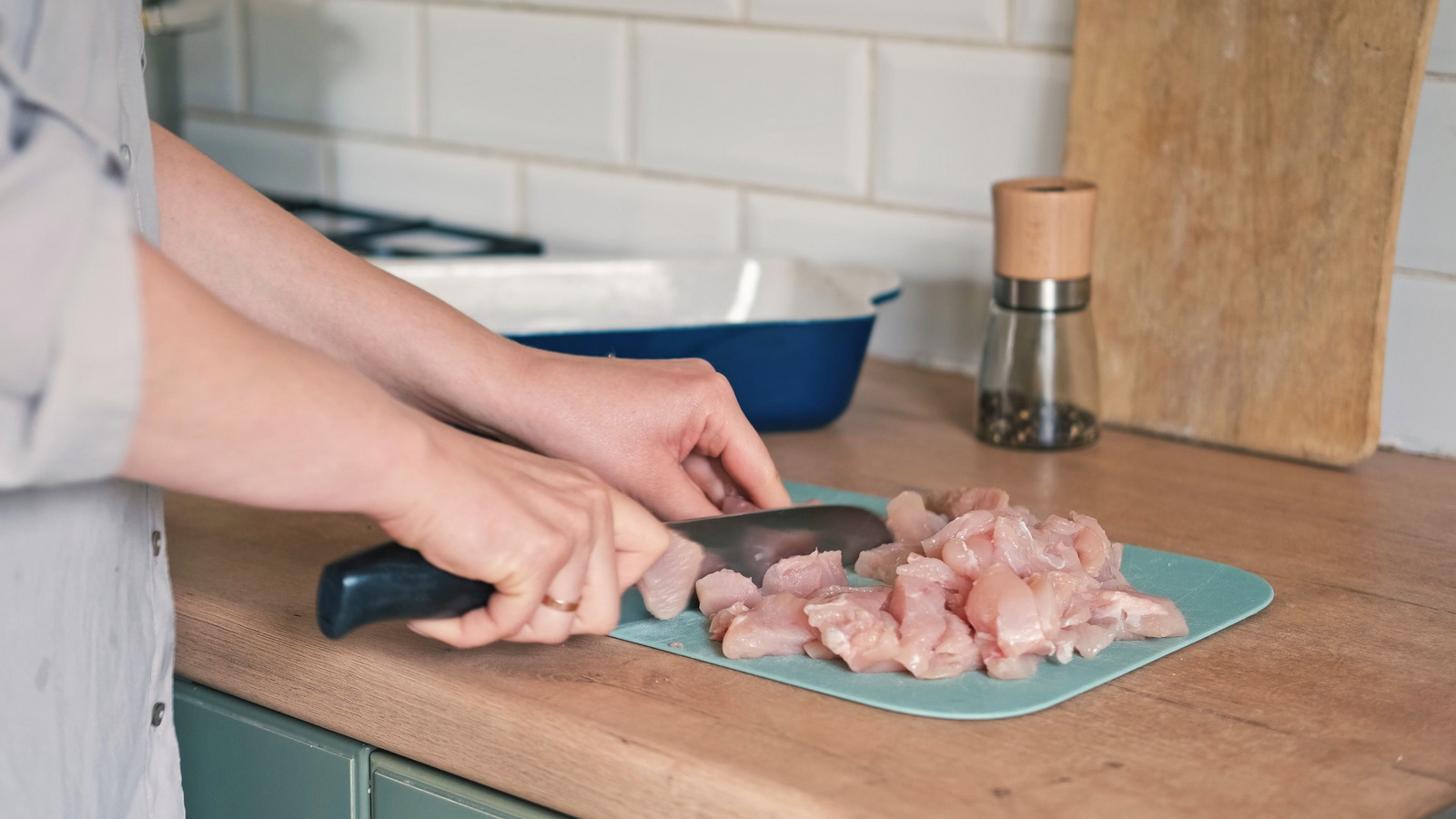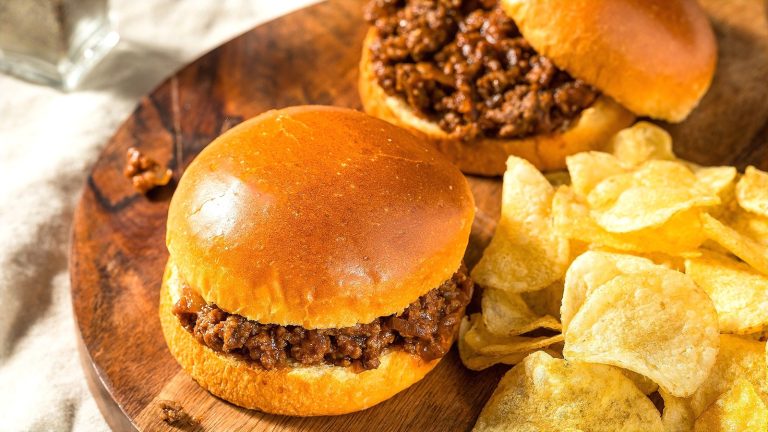We may receive a commission on purchases made from links.
Whether you have dreams of being the next celebrity chef or only cook because you have to eat or feed a family, you probably reach for your chef’s knife regularly. As you can tell by the name, a chef’s knife is designed to be a chef’s go-to knife. They are versatile and can come in handy whether you’re slicing carrots, cutting a block of cheese, mincing garlic without a garlic press, cutting a roast, and so much more.
With how much you use your chef’s knife, it is critical to make sure that it is really working for you. While many knives can last a long time, there are some crucial signs that it may be time to replace your trusty chef’s knife. We interviewed four professional chefs and asked for their expert input on the signs that it may be time to start shopping for one of the best chef’s knives to replace your current model that is either unsafe or unfit for use. Galen Zamarra is the co-founder of Galen Hospitality Group; Joey Sergentakis is a Michelin-starred chef, and Executive Chef and the co-owner of Allendale Social, Boschetto, and Charlie’s Place; Jessie-Sierra Ross is a cookbook author of “Seasons Around the Table; Effortless Entertaining with Floral Tablescapes & Seasonal Recipes” and a food & lifestyle blogger at Straight to the Hips, Baby; and Britt Rescigno is the executive chef and owner at Fiamma.
A chipped blade probably means chef’s knife needs to be replaced
While chips are not common in quality knives that are well-cared for, they can still happen. According to Jessie-Sierra Ross, this is most likely to happen if you’re not caring properly for your knives or handling them correctly. For example, storing your knives in a drawer is not worth the risk, as it makes it more likely that the blades will get inadvertently bumped or hit against something that causes them to chip. If you discover a chip on your chef’s knife, stop using it right away. Ross explains, “A chipped chef’s knife can create an uneven cutting edge, and the knife may ‘slip’, leading to unpredictable cuts. Knife slips are very dangerous and can cause significant injuries to your hands and fingers if you are not careful.”
A chipped knife doesn’t always need to go — but it might. “While minor chips can sometimes be re-sharpened or ground out, deeper chips often signal it’s time to replace the knife,” explains Joey Sergentakis. In some cases, a professional may be able to regrind knives that have a large chip. However, depending on the quality of the knife and how long you’ve had it, you may decide that paying for a professional to reshape it isn’t worth the cost.
You may need to replace a chef’s knife with a bent tip
“There is nothing quite like the disappointment of pulling your chef’s knife out of your block and realizing you bent the tip putting it away the last time,” says Jessie-Sierra Ross. However, this does happen from time to time. While frustrating, Ross explains why the tip of a knife may bend. She says, “Knives use a very thin piece of heat forged metal for the blade, and accidents can happen while cleaning or storing.”
Sometimes a bent tip will necessitate a knife replacement. But, as you’re deciding what to do about your prized chef’s knife, put it aside and do not continue using it to slice, dice, or chop. “If left unaddressed, [a bent tip] can compromise the accuracy of delicate cuts and lead to uneven pressure on the blade, which is unsafe and inefficient,” explains Joey Sergentakis. If you want to try to salvage the knife, you can bring it to a professional. According to Sergentakis, they may be able to restore the tip, depending on the knife’s quality and how severely bent it is. However, if you don’t think the knife is worth paying to have fixed or if the professional sharpener is unable to restore it for you, you’ll be best off properly disposing of the tool and shopping for its replacement.
Using a chef’s knife with loose rivets can be dangerous
According to our experts, loose rivets on a knife are almost always a sign that it is time to look for a replacement. The rivets serve an important job of keeping the knife’s handle securely attached to the tang. When they become loose, it can cause a range of problems. According to Galen Zamarra, one of these issues relates to food safety. He explains, “Food and water can get in between the tang and the handle, which can form bacteria and get into the food.” Inadvertently getting yourself or others sick by using an unsanitary knife simply isn’t worth the risk. Using a knife with loose rivets can also threaten your personal safety. “Your grip can slip resulting in possibly cutting yourself or dropping the knife,” says Zamarra. A potentially severe injury also isn’t worth using a knife that needs to be replaced.
While most knives with loose rivets will require a replacement, there may be some instances where the rivets can be retightened to avert a crisis. “Depending on the material and the severity of the rivet warping, you may be able to get the knife repaired. This is one of the reasons to invest in a quality chef’s knife from a reliable maker,” explains Jessie-Sierra Ross. However, she explains that you will likely need to return the knife to the supplier in order to get it repaired, if doing so is even an option.
Do not continue to use a chef’s knife that has a broken handle
If your chef’s knife has a broken handle, all of our experts agree that it should be replaced. “Using a knife with a broken handle can be dangerous. It affects your grip and control, increasing the risk of slippage or injury,” explains Joey Sergentakis. Jessie-Sierra Ross agrees. Not only will the knife become unsafe to use, but she also explains that it won’t be as efficient due to the instability caused by the broken handle. “A stable knife handle lets you control the angle and cut of the knife, as you slice through your ingredients,” she says.
Britt Rescigno offers one more reason to reconsider using a knife with a broken handle. She says, “Bacteria can build up so easily on a high-use knife.” It simply isn’t worth the risk of inadvertently giving yourself or a guest food poisoning. Dispose of that old knife properly and look for a replacement.
Rusty knives may call for a replacement
Spotting rust on a knife is not always an indicator that you’ll need to look for a replacement, but it can be. According to Jessie-Sierra Ross, even high-quality stainless steel chef’s knives may rust if they’re not cleaned properly. Joey Sergentakis echoes this sentiment, explaining, “With carbon steel knives, some rust or patina is expected and can be managed with proper care.”
If your chef’s knife has rust, you can likely remove it by soaking the tool in a mixture of water and vinegar or by using a professional rust remover. However, Joey Sergentakis explains, “If rust becomes deep or pitted, especially on cheaper blades, replacement is likely necessary.” It is also not a good idea to continue using a rusty knife until you’ve removed the rust from it. Otherwise, the rust may transfer into the foods you’re slicing or chopping.
Understanding how to protect your knives against rust can simplify maintenance tasks and reduce the likelihood that you’ll need a replacement. “Rust is not an indication that you need a new knife but it is an indication that you aren’t properly washing and/or drying your knife,” says Britt Rescigno. She recommends hand-washing your chef’s knife with warm and soapy water and then hand-drying it right away. Avoid leaving your knives in the sink or putting them in the dishwasher to further reduce the risk of rust forming. Rescigno adds, “For knives that are carbon steel, I like to put a small bit of mineral oil on them to prevent rusting.”
Some knives may reach the point that they can no longer be properly sharpened
“Similar to sending out a piece of gold jewelry to get polished and losing some of the gold while polishing, every time you sharpen a knife, you lose a bit of the steel in the process,” explains Jessie-Sierra Ross. If you continue this process for years, you may reach the point that it is impossible to properly sharpen the knife. “Typically, if you start to see an extreme narrowing of the blade or the knife becomes unwieldy (unbalanced) to use, it’s time to find a replacement,” says Ross.
However, while it is possible for your cutting tools to reach this point, it is unlikely to happen when you know about keeping your knives sharp and when you have high-quality knives to start with. “In my experience—especially with the extremely high-quality Japanese knives I use — I’ve never had a knife reach that point. A well-made knife with proper steel and care can be maintained for decades,” explains Joey Sergentakis. However, he notes that lower-quality knives wear much more quickly. Even after sharpening, these models may be unable to maintain their edge, requiring more frequent replacements.
If a serrated knife is dull, it will need to be replaced
There are some key differences between the design of a serrated knife and the design of a straight knife that impact how they cut. These differences also impact how sharp the blade is — as well as how easy it is to resharpen it. “Serrated knives (often used for bread knives or steak knives) are shaped into a sawtooth design for cutting through more fibrous foods with ease,” explains Jessie-Sierra Ross. That sawtooth design also helps serrated knives stay sharper for longer than most straight knives.
However, you can easily sharpen a straight knife when it becomes dull. Conversely, according to Galen Zamarra, “Serrated knives that are super dull, are hard to sharpen.” He says, “A pro might just turn it into a straight blade and shave down the serrated edges.” However, this is a lot of work, and Zamarra recommends opting for a new knife altogether if yours reaches this point.
If you find that your chef’s knife isn’t the best fit for you, look for a replacement
Sometimes, there may be nothing inherently wrong with the chef’s knife you’ve been using, but replacing it may still prove to be the best decision. Jessie-Sierra Ross shares, “I sometimes joke that finding the perfect knife is like finding the perfect pair of shoes; you have to try out a few and make sure you’re ‘comfortable’ using them!” If the knife you’ve been using doesn’t feel like that “perfect” tool, then Ross explains that you may be better off looking for a replacement.
Joey Sergentakis agrees with this approach. He says, “If a knife feels uncomfortable in your hand, is too heavy or too light for your cutting style, or doesn’t hold its edge well, it may not be the right tool for you.” You’ll need a tool that matches your needs if you want it to really work for you and help you execute basic knife skills and techniuqes properly. As Sergentakis says, “Performance, comfort, and control are non-negotiable.” Cut your losses and search for the right chef’s knife for your kitchen.





